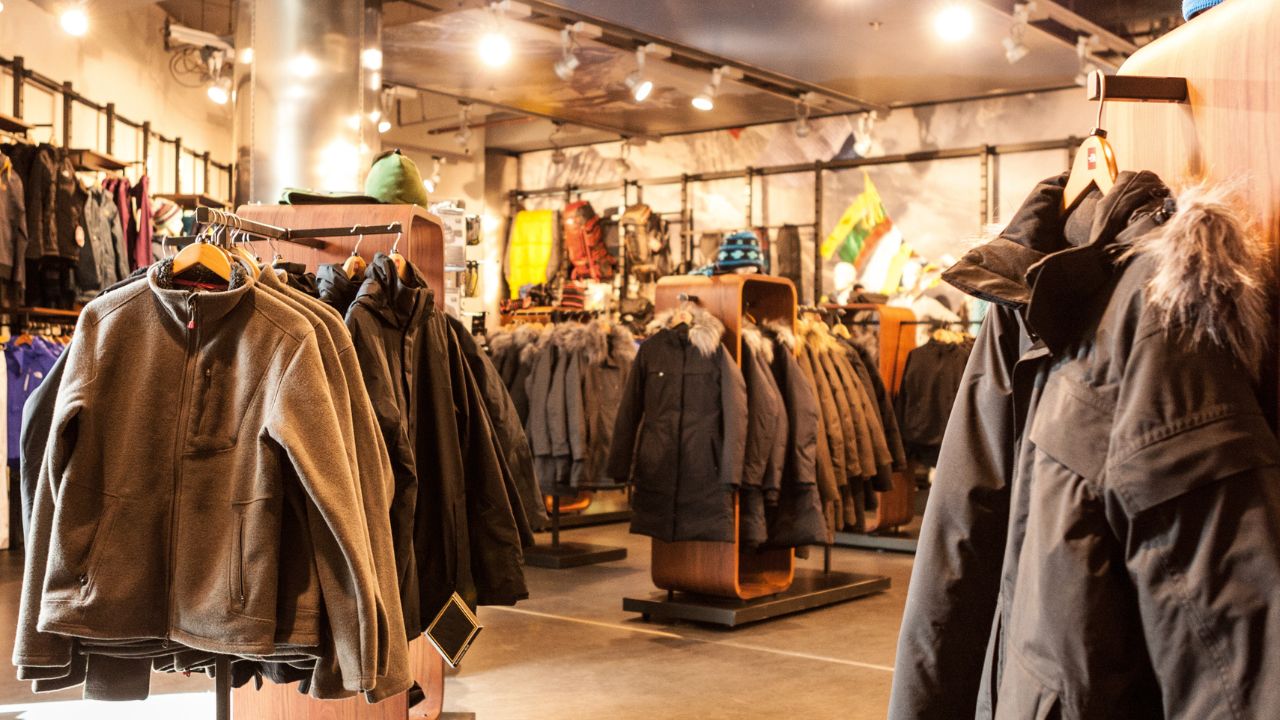Retail is changing quickly. As 2025 approaches, staying ahead of trends in retail marketing becomes even more crucial. Marketing strategies need to change.
This is because of shifting customer habits, new technology, and competition between online and physical stores. To remain effective, these strategies must adapt. Both physical stores and online platforms must prepare for a market shaped by personalization, technology, and innovation.
Below, we’ll explore the top future trends shaping marketing for retail stores in 2025. From leveraging digital tools to enhancing the in-store experience, these trends are set to redefine how retailers attract and retain customers.
1. Hyper-Personalization Through Data
By 2025, hyper-personalization will lead the charge in driving sales for retail brands. Shoppers now expect tailored experiences from the moment they interact with a brand. To meet these expectations, retailers will need to harness advanced data analytics tools.
These tools enable a deep understanding of customer preferences, habits, and purchase histories, providing actionable insights to optimize marketing efforts. Additionally, using this data effectively can result in increased sales and improved brand loyalty.
For example, analyzing a customer base using AI-powered insights can help identify shopping patterns, enabling retailers to tailor promotions, product recommendations, and even dynamic product pricing. Ultimately, this maximizes sales and enhances the overall shopping journey.
Furthermore, hyper-personalization also extends to marketing campaigns. Email marketing and targeted ads will become even more personalized, adjusting not only to customer preferences but also to shopping contexts, such as weather and real-time events.
How Retailers Can Adapt:
- Use tools like AI-driven recommendation engines to suggest the perfect product or service for each individual.
- Integrate personalized ads on social media and search engines to engage with potential customers.
- Create detailed personas for customers and segment your audience for more precise marketing efforts.
2. Enhanced Window Displays and Store Experiences

Brick-and-mortar retail stores are still an essential part of the retail landscape. However, the in-store experience will be more critical than ever to attract customers and build brand loyalty. A key trend in 2025 involves turning window displays and floor plans into immersive visual experiences.
To illustrate, retailers may adopt augmented reality (AR) to transform physical stores into interactive environments. For instance, AR-powered mirrors can allow customers to “try on” clothes virtually. Additionally, interactive displays can engagingly showcase product information, providing value while enhancing convenience.
Window displays, in particular, will evolve dramatically. They will rely on automation and smart sensors to adjust their content in real-time, capturing the attention of passersby. For example, these advanced displays could suggest promotions or highlight specific products based on local conditions or the time of day.
How Retailers Can Adapt:
- Invest in AR and VR tools to upgrade brick-and-mortar retail store experiences.
- Implement automated window displays that adjust messaging based on audience behavior.
- Include QR codes on displays to connect offline experiences with online marketing efforts.
3. Sustainability as a Core Marketing Value
The concept of sustainability has grown beyond being merely a trend and is now a requirement for businesses catering to conscious customers. By 2025, brands will emphasize highlighting sustainable practices in their marketing for retail stores strategies.
Shoppers are increasingly choosing brands with clear environmental and social values. Retailers will focus on using eco-friendly materials, cutting waste, and being transparent about their supply chains to build brand awareness and attract customers.
How Retailers Can Adapt:
- Highlight eco-friendly product lines in marketing campaigns.
- Use signage and window displays to communicate sustainability efforts in-store.
- Incorporate sustainability messages across all touchpoints, from emails to social media.
4. Omnichannel Integration and Immersive Shopping Experiences

Omnichannel marketing isn’t new, but by 2025 it will be a default approach in marketing for retail stores. Combining online and offline data, resources, and customer interactions will ensure a seamless shopping experience regardless of where or when customers engage with a brand.
Picture this: A customer browses a website, selects items for a virtual cart, and finds those items ready for trial at a nearby store. Omnichannel strategies increase customer satisfaction and foster brand awareness across multiple platforms.
Integration of virtual reality (VR) will also rise, allowing customers to explore products in 3D spaces. Whether online or in-store, customers will expect nothing short of convenience, speed, and consistency.
How Retailers Can Adapt:
- Use tools that sync customer data across physical stores, websites, and mobile apps.
- Combine click-and-collect strategies with exclusive perks in brick-and-mortar retail stores.
- Use 3D models and VR to offer a virtual representation of product, price, place, and promotion.
5. Leveraging Social Media Influencers
Partnering with social media influencers in retail marketing will play a critical role moving into 2025. Influencers on platforms like Instagram, TikTok, and YouTube can effectively amplify a retailer’s marketing message and help reach niche audiences.
These partnerships help businesses reach new customers, grow their audience, and boost engagement by promoting products in genuine, relatable ways. In particular, micro-influencers will stand out for their loyal and highly engaged followers.
How Retailers Can Adapt:
- Build long-term partnerships with influencers who align with their brand’s values.
- Leverage user-generated content to increase brand awareness and improve authenticity.
- Track influencer campaigns for performance metrics like increasing sales and customer engagement.
6. Gamification as a Marketing Strategy
Gamification is set to transform the way marketing campaigns capture attention. By 2025, retailers will use gamification to help retain customers, boost engagement, and drive repeat purchases. For example, loyalty apps could incorporate challenges or rewards systems that encourage shoppers to hit spending milestones or interact with in-store events.
Gamified experiences can also elevate brand experiences in-store. Think of playful scavenger hunts or AR-based games that allow shoppers to discover discounts and promotions within a store.
How Retailers Can Adapt:
- Create interactive challenges tied to loyalty programs.
- Integrate gamified content into your social media and app-based platforms.
- Offer unique rewards, such as discount codes or free trials, to encourage engagement.
7. AI and Machine Learning in Retail Marketing

AI and machine learning will thoroughly redefine marketing for retail stores. AI will automate routine tasks and create smarter marketing strategies. With predictive analytics, it can forecast trends, helping businesses plan campaigns based on customer behavior and seasonal patterns.
For instance, large-scale AI algorithms can optimize product price, place and promotion across multiple platforms. AI chatbots with natural language processing will speed up customer service and provide instant solutions to shoppers’ problems.
How Retailers Can Adapt:
- Leverage AI to track trends and build dynamic pricing strategies.
- Implement AI-powered chatbots to enhance customer service interactions.
- Automate repetitive tasks, such as email campaigns and offers, by incorporating machine learning tools.
8. Rethinking Loyalty Programs
Loyalty programs are becoming more innovative and tech-savvy. By 2025, traditional rewards programs will pivot toward personalized, digital-first systems that integrate seamlessly with omnichannel experiences.
Modern loyalty strategies use gamification, exclusive content, and personalized perks to build lasting connections with the customer base. A retailer that knows its loyal customers well can target them with exclusive shopping events or customized rewards.
How Retailers Can Adapt:
- Transition physical loyalty cards to app-based rewards systems.
- Offer exclusive benefits like limited-time freebies or personalized VIP experiences.
- Regularly revamp rewards and keep programs engaging.
9. Customer Experience Rules All
Above all, the customer experience is shaping up to be the key differentiator in the marketing for retail stores strategy of 2025. A smooth, enjoyable shopping process is paramount to ensure repeat visits and purchases. Whether through quick checkout procedures, clear communication, or offering tailored promotions, focusing on customer satisfaction ensures consistent results.
Retailers will also need to focus on delivering an emotional connection. Customers should leave a store or website with a memorable, positive impression to keep them coming back.
How Retailers Can Adapt:
- Train employees to provide exceptional in-store customer service.
- Offer multiple payment options for faster checkouts, both offline and online.
- Use post-purchase follow-ups to delight customers with special offers.
Final Thoughts on Marketing for Retail Stores in 2025
The landscape of retail marketing is rapidly shifting toward a more data-driven, tech-savvy, and customer-centric future. Success will come from using innovative strategies while staying true to your brand’s values, from personalized marketing to sustainable branding.
Retailers must rethink their marketing strategies, aiming for both higher sales and lasting growth by prioritizing excellent customer experiences.
Ready to future-proof your retail marketing? Let Marketing Immersion help you thrive in 2025 and beyond—elevate your brand and drive results today!






